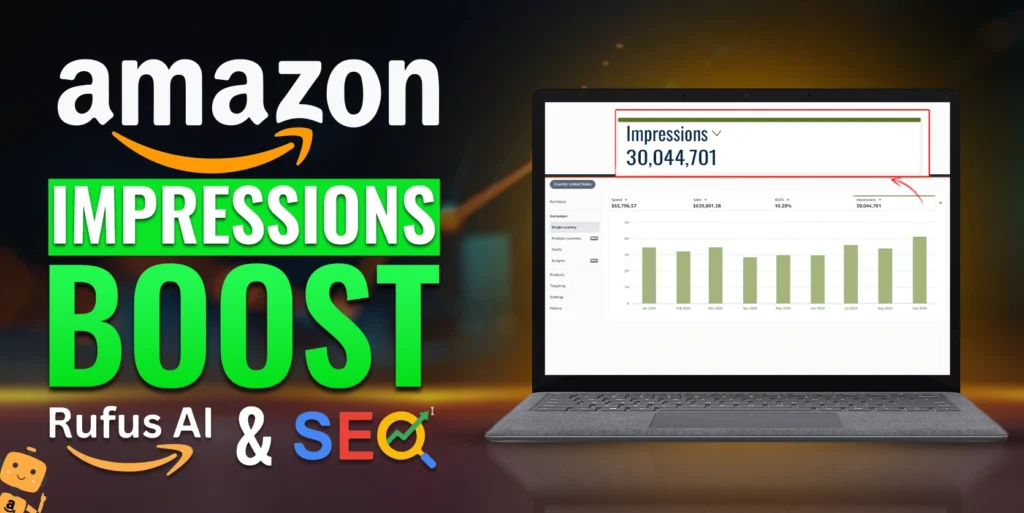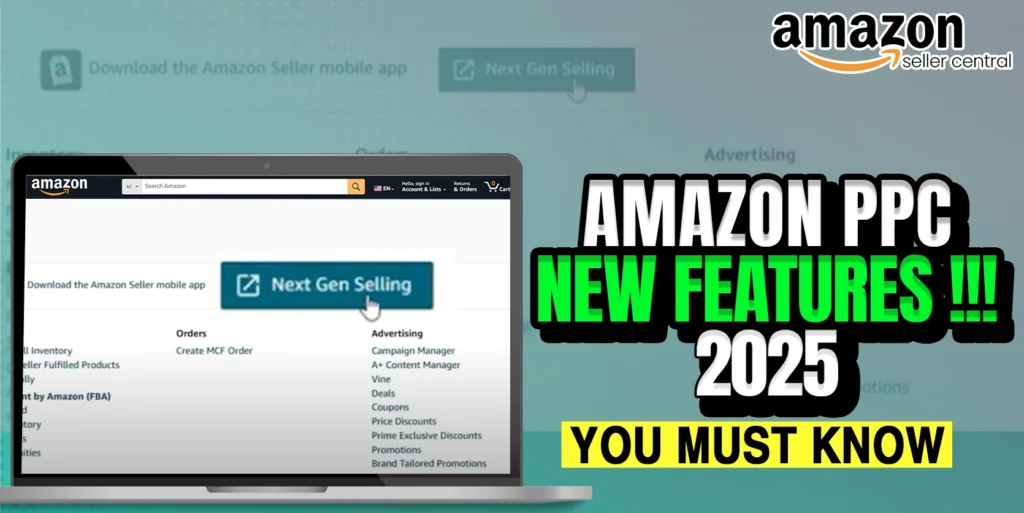An Amazon listing impression refers to the number of times your product listing is shown or displayed to customers on the Amazon platform. It occurs when a product appears on a search results page, a product detail page, or any other page where customers can view your product, whether they click on it or not.
Getting your product seen by customers is the first step to driving sales on Amazon. This visibility, measured through impressions, is critical whether you’re relying on organic search rankings or Amazon PPC ads. In today’s marketplace, with AI-powered features like Amazon’s Rufus AI, image and voice search functionality, sellers need to strategically optimize their listings for both traditional and AI-enhanced search results. In this blog, we’ll cover how to get more impressions for your Amazon listings, the importance of keyword optimization, and how to adjust your PPC campaigns when impressions are low.
1. What Is An Amazon Listing Impression?
An impression refers to how many times your product is shown to customers in Amazon’s search results or other ad placements. Whether it’s from organic searches or PPC ads, impressions are the starting point for generating clicks and eventually driving sales.
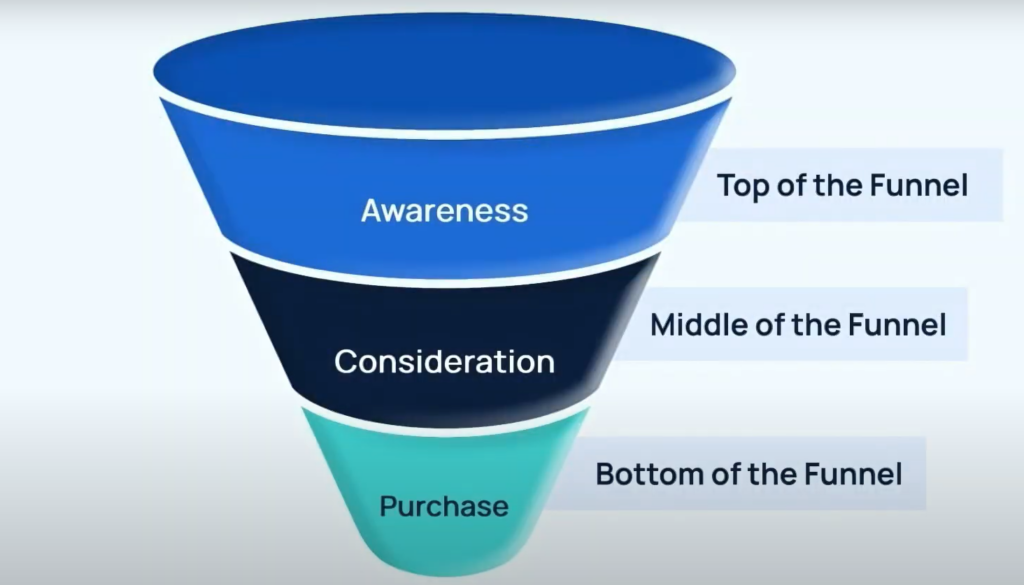
A product listing can gain impressions through several avenues on Amazon:
- Organic Search: Appearing in search results based on relevance, keyword optimization, and ranking.
- Sponsored Product Ads (SP Ads): Ads that promote individual products, increasing visibility in search results and on product detail pages.
- Sponsored Brands (Brand Ads): Featuring a brand logo, headline, and multiple products, these ads appear in premium placements to boost brand awareness.
- Sponsored Display Ads: Targeting shoppers based on interests and behavior, these ads appear both on and off Amazon.
- Video Ads: Engaging video content that shows up in search results or product pages, drawing attention through dynamic visuals.
- Sponsored Brand Video Ads: These combine video and branding, displayed in search results to engage shoppers effectively.
- Amazon DSP Ads: These programmatic ads show across the web, targeting Amazon customers to drive traffic back to listings.
These channels help maximize visibility and reach, directly impacting a listing’s overall performance on Amazon.

2. Why Are Amazon Impressions Important?
Impressions represent the visibility of your product on Amazon. The higher the number of impressions, the greater the chances of potential customers discovering your product, leading to more clicks and conversions. Without impressions, even the best products will remain unseen, reducing the opportunity for sales.
High impressions indicate better visibility, increasing the likelihood of clicks and conversions. Here’s why they’re important:
- Visibility: Impressions reflect how well your product is being showcased to shoppers. Without them, even the best-optimized product will go unnoticed.
- Traffic: More impressions create more opportunities for shoppers to click on your listing, driving traffic to your product detail page.
- Sales Potential: Every sale starts with an impression. A high impression count expands your chances of turning views into purchases, impacting your overall sales performance.
In essence, impressions are the foundation for building awareness, driving engagement, and generating sales on Amazon.
3. Amazon Customer Journey and Importance of Impressions
The customer journey on Amazon typically starts with a simple search. The buyer is searching for a specific item, and your product must appear in those search results to get noticed. This is where impressions come into play. Impressions are the number of times your product appears in a customer’s search results, and they are the first step toward gaining clicks and eventual orders.
Amazon’s search engine relies heavily on keywords, and now with the integration of AI tools like Rufus AI, customer searches have become more advanced. Buyers can simply type or even speak their queries, or use image searches to find products. To stay competitive, your product listing needs to be optimized for these various search methods. This includes using the right keywords, having a high-quality main image, and ensuring your listing is clear and relevant.

4. How to Get Impressions Organically and Through PPC
To increase impressions, you can focus on two key strategies:
– Organic Impressions: Improve your SEO by using relevant keywords, and optimizing product titles, descriptions, and backend search terms. This ensures your product appears higher in search results when customers search for related items.
– PPC Impressions: Use Amazon Sponsored Ads to drive impressions. A well-structured campaign targeting the right keywords can result in more visibility through paid placements.
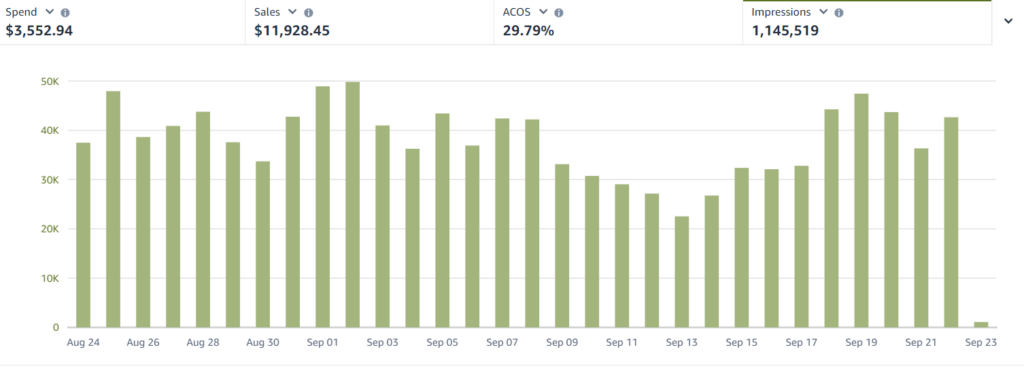
5. How Impressions Convert to Clicks and Sales
Once you get impressions, the goal is to turn them into clicks and sales. Conversion depends on the attractiveness of your main image, the appeal of your product title, competitive pricing, and a strong product description. A high click-through rate (CTR) shows your listing effectively attracts shoppers’ attention, eventually leading to conversions.
6. Factors Impacting Amazon Listing Impressions
Several factors influence your listing’s impressions, including:
– Keyword Usage: Ensure you use the right keywords in your title, bullet points, and backend to align with customer searches.
– Search Terms: Continuously monitor which search terms customers are using to discover your product, and adjust your SEO accordingly.
7. Impact of Amazon Rufus AI and AI Suggestions on Impressions
Amazon’s Rufus AI provides personalized search suggestions based on user behavior, preferences, and browsing history. This AI-enhanced search affects impressions by showcasing products that are more aligned with customer intent. Sellers should consider optimizing their product listings based on Rufus AI suggestions to appear in relevant searches and boost impressions.
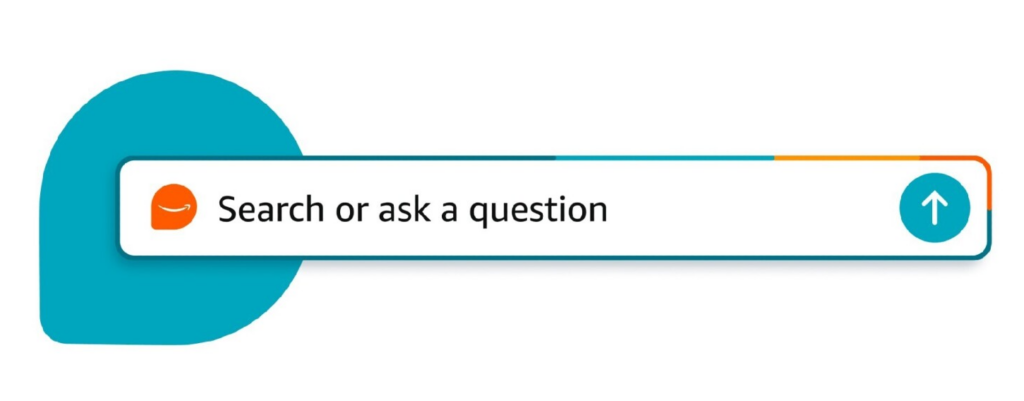
– How Rufus AI Works: Rufus AI analyzes data from user searches and suggests products that align with past behaviors or preferences. By utilizing these AI-driven suggestions, sellers can adjust their SEO and PPC strategies.
– Conventional Search Bar’s Role: While Rufus AI is evolving, the traditional Amazon search bar still plays a crucial role. Users searching by product keywords are primarily influenced by how well listings are optimized with targeted keywords.
Let’s take Halloween lights as an example of how to optimize your Amazon listing for impressions. To gain organic impressions, focus on high-volume keywords like “Halloween string lights” or “LED spooky lights” in your title, description, and backend search terms. For PPC, start with a Sponsored Product campaign targeting relevant long-tail keywords. Monitor impressions and adjust bids weekly, using Amazon’s suggested bid range. Additionally, ensure the main image is visually striking and relevant to the search terms, as this plays a significant role in turning impressions into clicks. Lastly, incorporate Rufus AI suggestions into your PPC strategy, and optimize for voice and image search to gain maximum visibility.
8. Amazon Image Search and Its Role in Boosting Impressions
With the rise of smartphone-based image searches, the product’s main image has become increasingly important. Customers can upload images to find similar products, making it essential for your main image to accurately represent your product. Having a high-quality, visually appealing main image can increase not only impressions but also clicks and conversions.
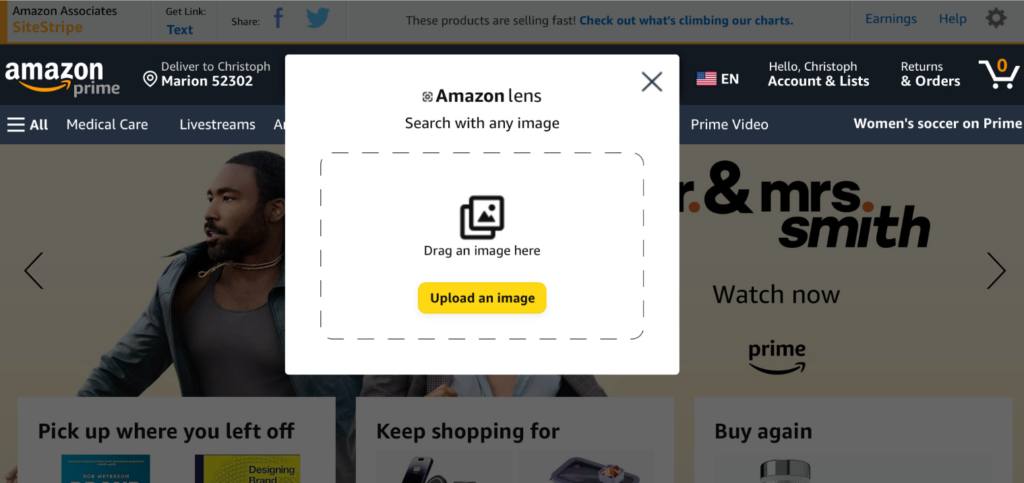
9. Amazon Voice Search and Its Impact on Impressions
As voice search becomes more prevalent, optimizing for voice search is essential. Customers using devices like Amazon Alexa may use more conversational search terms, making it crucial to incorporate natural language phrases into your listing. Products that are optimized for voice search will have a higher chance of appearing in results, thus gaining more impressions and clicks.

10. Importance of the Main Image in Driving Impressions and Clicks
Your product’s main image is often the first thing potential buyers notice. A sharp, professional image helps your product stand out in search results. Amazon prioritizes listings with engaging main images, making it crucial to invest in high-quality visuals to enhance both impressions and click-through rates.
11. Amazon PPC Adjustments for Low Impressions
If your Amazon PPC ads are getting low impressions, consider troubleshooting with the following steps:
– Keyword SEO: Check if the keywords you’re targeting appear in your listing. Use the “ASIN + Keyword” search method to ensure your listing shows up for those terms.
– Suggested Bid: Ensure you’re bidding within Amazon’s suggested bid range. If not, adjust accordingly.
– Increase Your Bid: Gradually increase your bid weekly by small increments to boost impressions.
– Campaign Budget: Ensure your daily budget is sufficient to support your targeted keywords. If not, consider increasing it or creating separate campaigns for high-priority keywords.
– Negative Keywords: Review and remove any negative exact or phrase matches that might be limiting impressions.
– Time: Give your campaigns at least 7 days to gather data and increase impressions.
How to Convert Clicks into Sales and Increase CTR and Conversions
Extra Tips -1: Convert Clicks into Sales and Increase CTR
Converting clicks into sales depends on several factors, including the quality of the product page and its overall appeal. Here are strategies to increase both CTR and conversions:

a. Optimize Product Listings:
– Main Image: Use high-quality, clear, and appealing product images that attract attention and give shoppers a clear idea of the product.
– Title: Craft descriptive and keyword-rich titles that highlight key features and benefits.
– Bullet Points: Use the bullet points to explain key benefits, and product use, and differentiate your product from competitors.
– Pricing: Make sure your price is competitive. Consider using Amazon’s price tracking tool to keep your pricing in line with market trends.
– Social Proof: Encourage positive reviews. Products with high star ratings (4-5 stars) and many reviews tend to convert better.
– A+ Content (EBC): Use enhanced content to showcase your product with engaging visuals and additional information that convinces shoppers to buy.
b. Offer Promotions and Discounts:
Promotions like coupons, lightning deals, and other discount offers can significantly improve CTR and sales by giving shoppers additional incentives to click and buy.
c. PPC Campaign Optimization:
– Target Relevant Keywords: Ensure your ads are targeting keywords that are closely aligned with your product.
– Bidding Strategy: Monitor and adjust bids to remain competitive and capture more clicks.
– Use Negative Keywords: Eliminate irrelevant search terms that waste ad spend and lower CTR.
Extra Tips – 2: Improve CTR and CVR in Amazon Search
To boost Click-Through Rate (CTR) on Amazon, focus on optimizing product titles with relevant keywords and key features, using high-quality images that showcase the product effectively. Ensure competitive pricing and highlight any discounts to attract attention. Craft compelling product descriptions using bullet points to clearly communicate features and benefits, while a high star rating and positive reviews build trust.

Strive for Amazon badges like “Best Seller” or “Amazon’s Choice,” as they significantly enhance clickability. Additionally, leverage Sponsored Brands ads to promote your brand and multiple products in premium placements. By enhancing these elements, you can increase CTR and drive more shoppers from viewing to engaging with your listing.
CTR represents the percentage of people who clicked on your listing after seeing it in the search results. Here are ways to boost CTR:
a. Eye-Catching Main Image:
The main image should be clean, and professional, and showcase your product prominently. Avoid clutter or unnecessary elements.

b. Clear Product Titles:
The title should not be too long, but it should effectively convey the product and include key search terms relevant to the user’s query.
c. Competitive Pricing:
Products that are competitively priced compared to others in the same category have a higher chance of getting clicks.
d. Highlight Special Features:
If your product has any unique selling points, ensure they are highlighted either in the title, bullet points, or images.
e. Leverage Badges:
Amazon’s Choice or Best Seller badges significantly improve CTR. While these badges cannot be directly controlled, consistently performing well in sales, reviews, and customer satisfaction can help win them.
Extra Tips – 3: How to Improve Organic CVR in Amazon
Once a customer clicks on your listing, the next goal is to convert that click into a sale. Improving your CVR involves optimizing every aspect of your product page to encourage purchases:
a. Enhanced Content:
Utilize Amazon’s A+ Content Manager (for registered brands) to add enhanced visuals, videos, and detailed descriptions of your product.
b. High-Quality Reviews:
Positive reviews are crucial to building customer trust. Respond to negative reviews constructively and address product issues if needed.
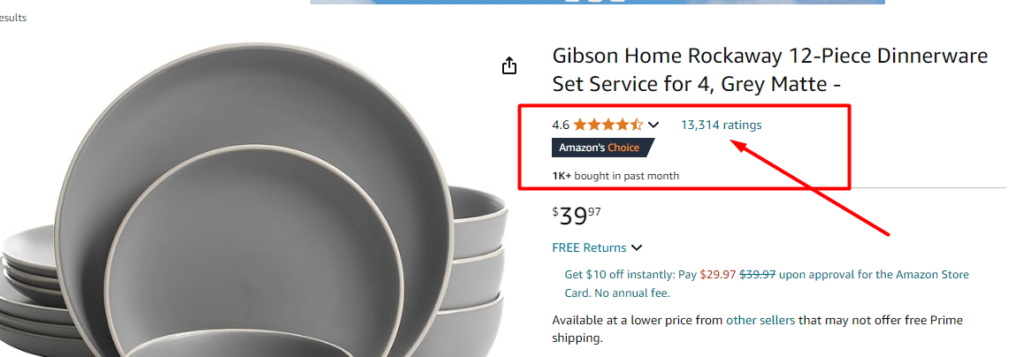
c. Offer a Clear Value Proposition:
Your product listing should communicate what makes your product unique or superior to competitors.
d. Fast Shipping:
Offering Prime shipping or any other fast delivery options can encourage faster conversions, especially from Prime members.

e. Bundles and Cross-Selling:
Cross-sell related products or offer bundles that increase the perceived value, encouraging customers to buy more.
Improving CTR and CVR on Amazon is about continuously optimizing your product listings, advertising campaigns, and pricing strategies. A good combination of SEO, engaging content, and data-driven PPC adjustments will help you attract more clicks and convert those clicks into sales.
Insights!
Increasing your Amazon listing impressions is the key to getting noticed in a competitive marketplace. By optimizing your SEO, leveraging AI suggestions like Rufus AI, and fine-tuning your PPC strategies, you can maximize your product’s visibility and drive more clicks and sales. Keep refining your approach based on keyword performance, search trends, and customer behavior to stay ahead of the competition.
Here, at Ecomclips, we have been helping many Amazon sellers boost their sales and capture market share with both PPC and organic SEO. If you need any help boosting your Amazon sales or growing your brand, please don’t hesitate to mail us at our email address, info@ecomclips.com
Also, if you require an Amazon store or account audit for both PPC ads and SEO, you can let us know via our email address, and we will provide you with a free account audit. Additionally, if you require any assistance, please reach out to us in the comment box. We are here to assist you in managing PPC advertisements to improve your profit, so we offer a personalized approach to our service.
